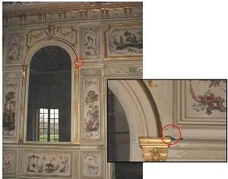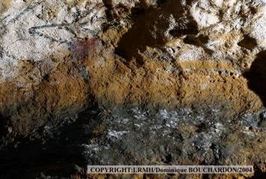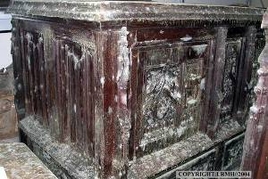Moulds should worry!

Until now, detecting fungal contamination effectively meant searching for visible signs of development, suspicious odours or signs of humidity. Air samples could also be taken, and cultivatable moulds could be identified and counted. Due to late identification, invisible contamination, there was no global technique capable of stopping contamination before irreparable damage was observed. Mould detection technology developed by CSTB will improve the situation...
All types of moulds emit VOCs (Volatile Organic Compounds) as soon as their development begins. These VOCs are special in that they pass through the walls and can be detected by sensors after only two days! CSTB used these specific chemical indicators of fungal growth as a basis for developing a hidden and recent contamination index. It was subsequently tested in the framework of the Housing campaign carried out by the OQAI (Observatoire de la Qualité de l'Air Intérieur – Indoor Air Quality Observatory).
Moulds in homes consist of specific types of moulds that are not necessarily the same as are found in historic monuments. CSTB had to modify the housing index to adapt it to each of the locations on which it worked, museums, art galleries, libraries, castles, etc. In situ tests were carried out at the beginning of the year 2008; they will continue until August this year. In particular, this new technology was used in a cave adorned with prehistoric drawings. "We realised that VOCs emitted by moulds were absorbed by the earth on the ground. We needed to get around this problem by finding VOCs with a life long enough for us to capture them," says Stéphane Moularat, specialised Engineer at CSTB. Detection of moulds through their chemical emissions provides a means of taking action on paintings at an early stage and suggesting effective repair solutions. Measurements were made before and after the LRMH treatment (by scraping the mould) and demonstrated that the moulds had disappeared before they had time to spread throughout the cave!
With this experience, CSTB is ready to perform « pilot » screening in « sites » other than historic monuments and housing, for example in the hospital sector, for archive buildings, industrial process premises (food processing, cosmetics, pharmaceuticals, etc.) or various work locations. Let it be clear!
A national patent, shortly to become international
This completely innovative detection technique was developed in 2005 when Stéphane Moularat was writing his thesis. In March 2007, the research worker and CSTB decided to patent the index (for homes and the different historic locations) in France. The index was published in several international reviews, and many countries showed an interest in it. This interest encouraged CSTB and Stéphane Moularat to initiate an international phase of the patent before September 2009. "The objective is to make this index known to an international public to broaden its field of action" says Stéphane Moularat. There is no doubt that moulds living in historic locations have a lot to worry about…



